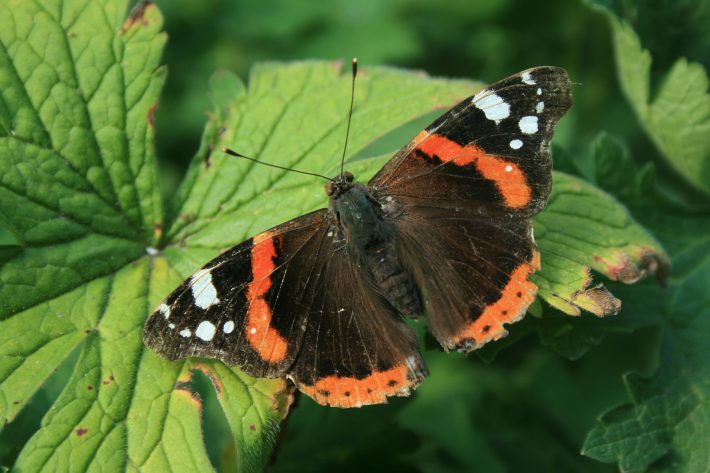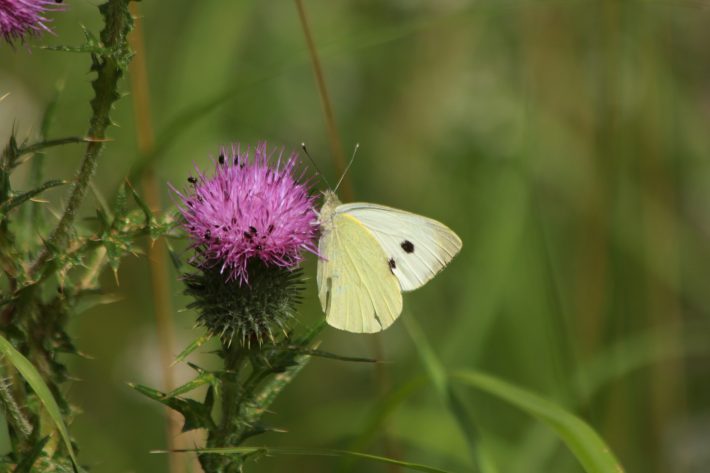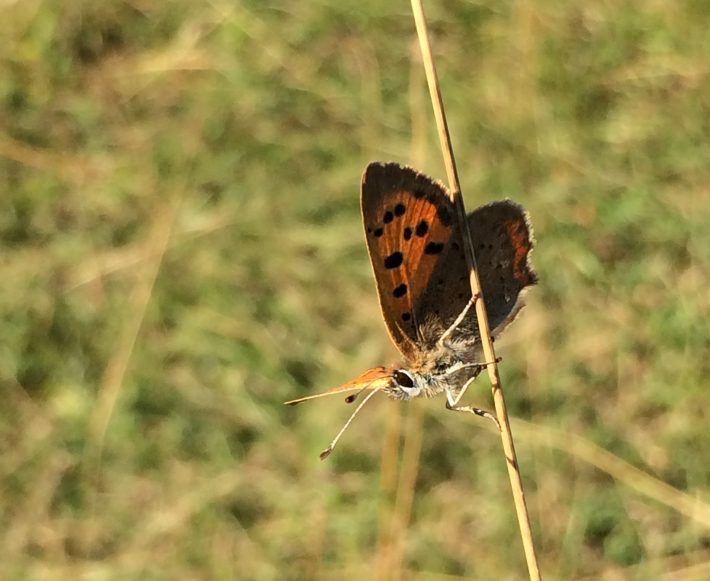Research published in Journal of Animal Ecology finds that butterfly species that mostly rely on finding shade to keep cool are at a greater risk of population decline due to climate change and habitat loss.

- Study of 29 species of UK butterfly reveals species vary in ability to control their body temperature
- Colour, size and wing control are important factors in keeping cool
- Species that mostly rely on finding shade to keep cool are at greatest risk of population decline due to climate change and habitat loss
- Conservation measures must take these findings into account to maintain butterfly diversity
- Insects, including butterflies, are important in nearly all terrestrial ecosystems and contribute to crop production
Researchers have discovered significant variations in the ability of different UK butterfly species to maintain a suitable body temperature. Species that rely most on finding a suitably shady location to keep cool are at the greatest risk of population decline. The results predict how climate change might impact butterfly communities, and will inform conservation strategies to protect them.
The results, published today in the Journal of Animal Ecology, show that larger and paler butterflies including the Large White (Pieris brassicae) and Brimstone (Gonepteryx rhamni) are best able to buffer themselves against environmental temperature swings. They angle their large, reflective wings in relation to the sun, and use them to direct the sun's heat either away from, or onto their bodies. These species have either stable or growing populations.
More colourful larger species such as the Peacock (Aglais io) and Red Admiral (Vanessa atalanta) have greater difficulty controlling their body temperature, but even they are better than their smaller relatives like the Small Heath (Coenonympha pamphilus).
The study found that some butterfly species rely on finding a spot at a specific temperature within a landscape – termed a 'microclimate' – to control their body temperature. Air temperatures vary on a fine scale: a shaded patch of ground is cooler than one in full sun, for example. These 'thermal specialists', including Brown Argus (Aricia agestis) and Small Copper (Lycaena phlaeas), have suffered larger population declines over the last 40 years.

All butterflies are ectotherms: they can't generate their own body heat. The populations of two thirds of UK butterfly species are in decline: habitat loss and fragmentation, and more monotonous landscapes have removed many of the microclimates butterflies need to survive. Climate change is compounding the problem by causing more extreme weather events and greater fluctuations in temperature.
Insects, including butterflies, pollinate around 85% of our food crops – providing a vital service worth billions of pounds globally. Protecting a diverse range of species will provide long-term resilience: if numbers of one species fall there are others to fill the gaps. Insects are also an important food source for many other species, including birds.
"Butterfly species that aren't very good at controlling their temperature with small behavioural changes, but rely on choosing a micro-habitat at the right temperature, are likely to suffer the most from climate change and habitat loss," said Dr Andrew Bladon, a Postdoctoral Research Associate in the University of Cambridge's Department of Zoology, and first author of the report.
He added: "We need to make landscapes more diverse to help conserve many of our butterfly species. Even within a garden lawn, patches of grass can be left to grow longer – these areas will provide cooler, shady places for many species of butterfly. In nature reserves, some areas could be grazed or cut and others left standing. We also need to protect features that break up the monotony of farm landscapes, like hedgerows, ditches, and patches of woodland."
Landscapes with a diversity of heights and features have a greater range of temperatures than flat, monotonous ones. This applies on scales from kilometres to centimetres: from hillsides to flower patches. Such structural diversity creates different microclimates that many butterflies use to regulate their temperature.

The research involved catching nearly 4,000 wild butterflies in hand-held nets, and taking the temperature of each using a fine probe. The surrounding air temperature was measured, and for butterflies found perching on a plant, the air temperature at the perch was also taken. This indicated the degree to which butterflies were seeking out specific locations to control their body temperature. In total, 29 different butterfly species were recorded.
The study reveals that butterflies are either thermal generalists or thermal specialists, and this does not always correspond with their current categorisations as either habitat generalists or specialists.
"As we plan conservation measures to address the effects of climate change, it will be important to understand not only the habitat requirements of different butterfly species, but also their temperature requirements," said Dr Ed Turner in the University Museum of Zoology, Cambridge, who led the work.
He added: "With this new understanding of butterflies, we should be able to better manage habitats and landscapes to protect them, and in doing so we're probably also protecting other insects too."
Over the past thirty years, many species of butterfly have expanded their range northwards, as more northerly places have become warmer due to climate change. The ranges of species adapted to cooler environments are shrinking. These trends have been tracked for butterfly populations as a whole, but no previous study has investigated how the individual butterflies that make up these populations are able to respond to small scale temperature changes.
Bladon said: "I like to think of butterflies as the gateway drug. If we can get people involved in butterfly conservation, that's the first step to getting them to care about insects more broadly."
The work was carried out at grassland sites in Bedfordshire, UK, on reserves owned and managed by the Wildlife Trust for Bedfordshire, Cambridgeshire and Northamptonshire. Data was also collected at two Royal Society for the Protection of Birds (RSPB) reserves in Wiltshire and Cumbria, and a National Trust for Scotland site in Perthshire. The study was conducted in collaboration with The Wildlife Trust for Bedfordshire, Cambridgeshire & Northamptonshire; the RSPB Centre for Conservation Science; Lancaster University; and the Czech Academy of Sciences.
You can read the article for free (for a limited time) here:
Bladon, A.J. et al: 'How butterflies keep their cool: physical and ecological traits influence thermoregulatory ability and population trends.' Journal of Animal Ecology, 24 Sept 2020. DOI: 10.1111/1365-2656.13319






